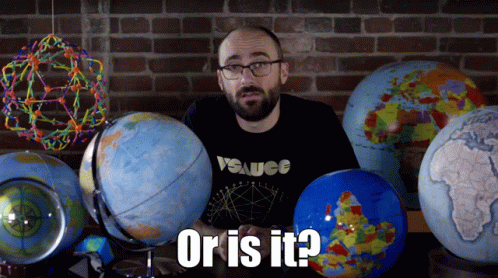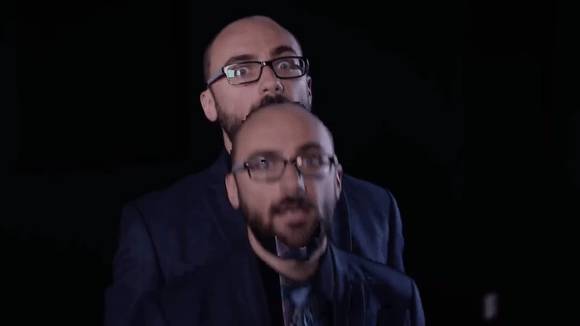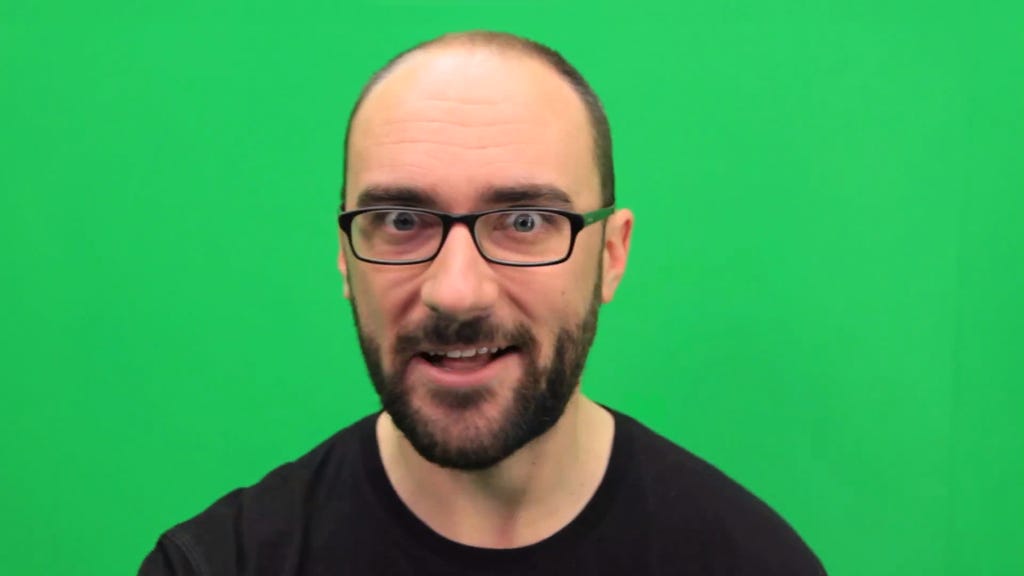He Just Came Back from the Dead with a video About Death | Vsauce
Who or what exactly is Vsauce? Almost 20 years later, we’re still not sure.
Hi everyone —
I hope you’re having a great week. I am.
Let’s dive into this week’s newsletter.
Hey, Vsauce. Michael here.
Well, not exactly.
Three weeks ago, Michael Stevens, creator behind Science edutainment YouTube channel Vsauce uploaded a new video titled All The Ghosts You Will Be.
No promotion. No teaser.
Just a 22-minute monologue about identity, time, and death uploaded without warning after nearly two years of silence.
For most YouTubers, disappearing for that long is a death sentence. But Stevens isn’t most YouTubers.
He’s the architect of Vsauce: one of the internet’s strangest, most beloved channels and, paradoxically, one of its most enduring.
The new video now has 4.8 million views.
That rhythm of vanishing for 18 to 24 months, returning with a quiet essay that breaks your brain a little has become part of the Vsauce mythos.
In 2021, it was Did People Use To Look Older? (19M views). In 2023, Selfie Waves (5.8M).
Now this.
So why does it still work?
Why are millions of people still watching a man talk to the camera about perception and paradox, years after most creators would’ve been replaced by the algorithm?
It should be easy to figure out.
Part 1: The Hook
The new video opens the way most Vsauce videos do. Statement-less, in favour of questions.
Usually a single one.
Sometimes it’s math. Sometimes it’s metaphysics. Sometimes it’s a chair.
What is the speed of dark?
Do chairs exist?
What if everyone jumped at once?
The questions sound strange at first, but they’re always carefully chosen. Like if your GPS purposefully lead you to a cliff.
That’s the loop Michael Stevens opens. A loop you feel compelled to close. Not because you’re confused, but because you're intrigued. The premise is simple but the implications aren’t.
This is the Vsauce trick: take something familiar and walk it backwards until it becomes unfamiliar again. And somewhere along the way, you start to notice your own thinking.
So let’s ask one of our own:
Who is Vsauce?
Maybe it’s the voice. The pacing. The spiral of ideas that expands then folds back on itself. Maybe it’s the way the questions feel like puzzles, but resolve like poems.
Or maybe it’s the fact that after two years away, he can post a 22-minute meditation on death and identity with the most opaque video title we’ve read all week and still five million people will show up to watch.
Part 2: The Structure
To understand why Vsauce still works, you have to look at how it’s built.
Each video follows a loose but familiar rhythm:
The Hook A weird question posed with total sincerity.
The Detour A tangent that seems irrelevant (but isn’t).
The Spiral Science, philosophy, math, and logic, layered fast
The Callback A return to the original question, now with context.
The Fadeout A soft ending. A new question. A deeper mystery.
It’s educational storytelling disguised as digital content. A Socratic method rendered in cuts and diagrams.
You enter thinking you’ll get an answer.
You leave questioning assumptions you didn’t realize you held.
Part 3: Man Inside the Machine
Michael David Stevens.
Born in Kansas City, ‘86. Studied English literature and psychology at the University of Chicago; a pairing that now feels less like coincidence and more like blueprint.
He started making YouTube videos in 2007. Sketches, memes, early-internet ephemera.
Then in 2010, something shifted.
He launched a new channel called Vsauce. It was slower. The questions, weirder. And the pursuit of attention was entirely replaced with something else: the pursuit of ideas.
Stevens discovered that interesting questions usually don't have clean answers. And the most interesting questions are questions you probably never thought to ask.
Hands up, who here has ever asked themselves "What is the speed of dark?".
Well, Vsauce did and it became a 20-minute odyssey through physics, philosophy, and the nature of information itself.
By he doesn’t actually care about answers.
Because it’s not about knowing. And that’s the whole point.
Part 4: The Edit Is the Engine
Compared to most of today’s creator ecosystem, Vsauce feels minimal.
There are no elaborate transitions (the GIF above is a fan edit), no animated title cards, no cinematic cutaways.
The editing is clean. Dare I say, basic by current standards. Sometimes he doesn’t even bother removing the green screen. On purpose.
What carries these videos is the writing.
The rhythm and progression of thought. Vsauce is proof that the script still matters, even for YouTubers.
And that editing, when it’s doing its job well, truly becomes invisible.
Part 4.5: The Viral Paradoxes
Let’s break a few of his most iconic videos down:
“What is the Resolution of the Eye?” 44M+ views
A technical question that detours into the philosophy of perception, resolution, and infinity.
“How Much Does a Shadow Weigh?” 38M+ views
Physics, photons, and metaphor collide. You expect a joke but what you get is gravitational lensing.
“Is Your Red the Same as My Red?” 33M+ views
A gentle but mind-warping journey through color theory, neuroscience, and subjective experience.
“What if Everyone JUMPED at Once?” 73M+ views
His most-viewed video. A thought experiment that explodes into global-scale simulation.
Each video ends with more questions than it answers and unlike most viral content, these don’t expire.
Part 5: The Loop
So…. who is Vsauce?
You're expecting us to actually answer that, right?
That’s cute.
Let’s try something else.
Final Thought
Since launching in 2010. Vsauce has published over 300 videos, racking up more than 3.7 billion views, and amassed 24 million subscribers.
His most-viewed video “What if Everyone JUMPED at Once?” has over 73 million views. His series Mind Field, produced with YouTube Originals, ran for three seasons bringing experimental psychology to the mainstream.
His TED Talk on why we ask questions has over 12 million views alone.
Plenty have followed in his footsteps (yes, Veritasium, CGP Grey, Kurzgesagt, we see you), but none quite capture the same je ne sais quoi.
There are bigger channels. Flashier ones. But few that have made thinking feel urgent and emotional at this scale and sustained it for more than a decade.
Vsauce proved that curiosity, when structured well and delivered with care, could hold attention longer than outrage or spectacle.
That may not sound radical now. But in 2011, it truly was.
Ok, that feels like a nice way to conclude.
Or does it?





